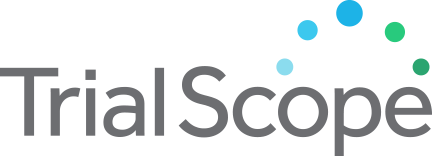Inclusion Criteria:
1. Male or female age 40 years or older. 2. IPF Diagnosis:
1. Satisfying the 2022 American Thoracic Society/European Respiratory Society
/Japanese Respiratory Society/Latin American Thoracic Association
(ATS/ERS/JRS/ALAT) diagnostic criteria (Raghu 2022) confirmed by the
investigator. 2. UIP or probable UIP based on chest HRCT obtained within 2 months of Day 0, or
historical lung biopsy consistent with UIP.
3. If receiving antifibrotic agents pirfenidone or nintedanib, patients must be
receiving a stable dose for ≥ 2 months prior to Day 0 and planning to stay on stable
background therapy; if not receiving pirfenidone or nintedanib, patients must be
naive to both drugs or not have received either for at least 4 weeks prior to Day 0
and remain off background therapy with no intention to start or re-start
(combination of nintedanib and pirfenidone not allowed).
4. If receiving monotherapy for the treatment of pulmonary hypertension (e.g.
phosphodiesterase 5 inhibitors, endothelin receptor antagonists or inhaled or oral
prostanoid therapy), patients must be receiving a stable dose for ≥ 4 weeks prior to
Day 0 and planning to remain on a stable dose throughout the study.
5. FVC ≥ 40% of predicted normal according to Global Lung Initiative (GLI)
6. Diffusion Capacity of Carbon Monoxide (DLCO) [corrected for hemoglobin] ≥ 25% to
<80% of predicted normal.
Exclusion Criteria:
1. Relevant airways obstruction (pre-bronchodilator Forced Expiratory Volume in one
second to forced vital capacity ratio less than 70% (FEV1/FVC < 0.7))
2. In the opinion of the Investigator, other clinically significant pulmonary
abnormalities.
3. Known significant PAH, defined as previous clinical or echocardiographic evidence of
significant right heart failure, history of right heart catheterization showing a
cardiac index < 2 L/min/m2, or PAH requiring combination of PAH-specific therapies
or any PAH parenteral therapy.
4. Emphysema ≥ 50% on HRCT assessed by the investigator, or the extent of emphysema is
greater than the extent of fibrosis according to reported results from the most
recent chest HRCT.
5. Acute IPF exacerbation within 6 weeks prior to screening and/or during the screening
period (investigator-determined).
6. ILD associated with other known causes. 7. Lower respiratory tract infection requiring antibiotics within 4 weeks prior to Day
0 and/or during the screening period.
8. Major surgery (major according to the investigator's assessment) performed within
six weeks prior to Day 0 or planned during the course of the trial. (Being on a
transplant list is allowed).
9. AST or ALT > 1.5 x ULN, Bilirubin > 1.5 x ULN, Creatinine clearance < 30 mL/min
calculated by Cockcroft-Gault formula.
10. Underlying chronic liver disease (Child Pugh A, B or C hepatic impairment).
11. Cardiovascular diseases, any of the following:
1. Severe hypertension, uncontrolled despite treatment (≥160/100 mmHg)
2. Myocardial infarction within 6 months of Day 0. 3. Unstable cardiac angina. 12. Bleeding risk, any of the following:
1. Known genetic predisposition to bleeding.
2. Patients who require:
i. Fibrinolysis, full-dose therapeutic anticoagulation (e.g. vitamin K antagonists,
direct thrombin inhibitors, direct oral anticoagulants, heparin, hirudin) ii. High
dose antiplatelet therapy (> 325 mg/day of aspirin; > 75 mg/day ticlodipine or
clopidogrel; any dose of other 2b3a anti-platelet agents)
13. History of hemorrhagic central nervous system (CNS) event within 12 months of Day 0. 14. Any of the following within 3 months of Day 0:
1. Hemoptysis or hematuria. 2. Active gastro-intestinal (GI) bleeding needing hospitalization/intervention or
peptic ulcer disease. 15. Coagulation parameters: International normalized ratio (INR) >2, prolongation of
prothrombin time (PT) and activated partial thromboplastin time (aPTT) by >1.5 x ULN. Note: Prophylactic low dose heparin or heparin flush as needed for maintenance of an
indwelling intravenous device (e.g. less than or equal to enoxaparin 40 mg
subcutaneously (SC) per day or heparin 5000 units SC every eight hours), low-dose
FXa inhibitors (rivaroxaban/apixaban: 2.5mg twice daily (max 5mg/day), edoxaban:
15mg/day), as well as prophylactic use of antiplatelet therapy (e.g. acetyl
salicylic acid [ASA] up to 325 mg/day, or clopidogrel at 75 mg/day, or equivalent
doses of other antiplatelet therapy) are not prohibited.
16. History of thrombotic event (including stroke and transient ischemic attack) within
12 months of Day 0. 17. Use of disease-modifying antirheumatic drugs, B-cell depleting therapies or
immunosuppressive medications, within 6 months of Day 0.
18. Use of systemic corticosteroids equivalent to prednisone >15mg/day within 2 weeks of
Day 0.
19. Simultaneous use of pirfenidone and nintedanib at screening.
20. Other disease that may interfere with testing procedures or in the judgment of the
Investigator may interfere with trial participation or may put the patient at risk
when participating in this trial.
21. Any documented active or suspected malignancy within 5 years prior to Day 0, except
appropriately treated basal cell carcinoma of the skin, in situ squamous cell
carcinoma of the skin or "under surveillance" prostate cancer.
22. Evidence of active infection (chronic or acute) based on clinical exam or laboratory
findings.
23. The patient has a confirmed infection with Severe Acute Respiratory Syndrome-
Coronvirus-2 (SARS-CoV-2) within the four weeks prior to Day 0 or during the
screening period.
24. Women who are pregnant, nursing, or who plan to become pregnant while in the trial.
25. Women of childbearing potential not willing or able to use highly effective methods
of birth control per ICH M3 (R2) that result in a low failure rate of less than 1%
per year when used consistently for 28 days prior to and three months after
Investigational Medicinal Product (IMP) administration.
Note: A woman is considered of childbearing potential, i.e. fertile, following
menarche and until becoming post-menopausal unless permanently sterile. Permanent
sterilization methods include hysterectomy, bilateral salpingectomy and bilateral
oophorectomy. 26. In the opinion of the Investigator, active alcohol or drug abuse.
27. Patients not able to understand or follow trial procedures including completion of
self- administered questionnaires without help.

